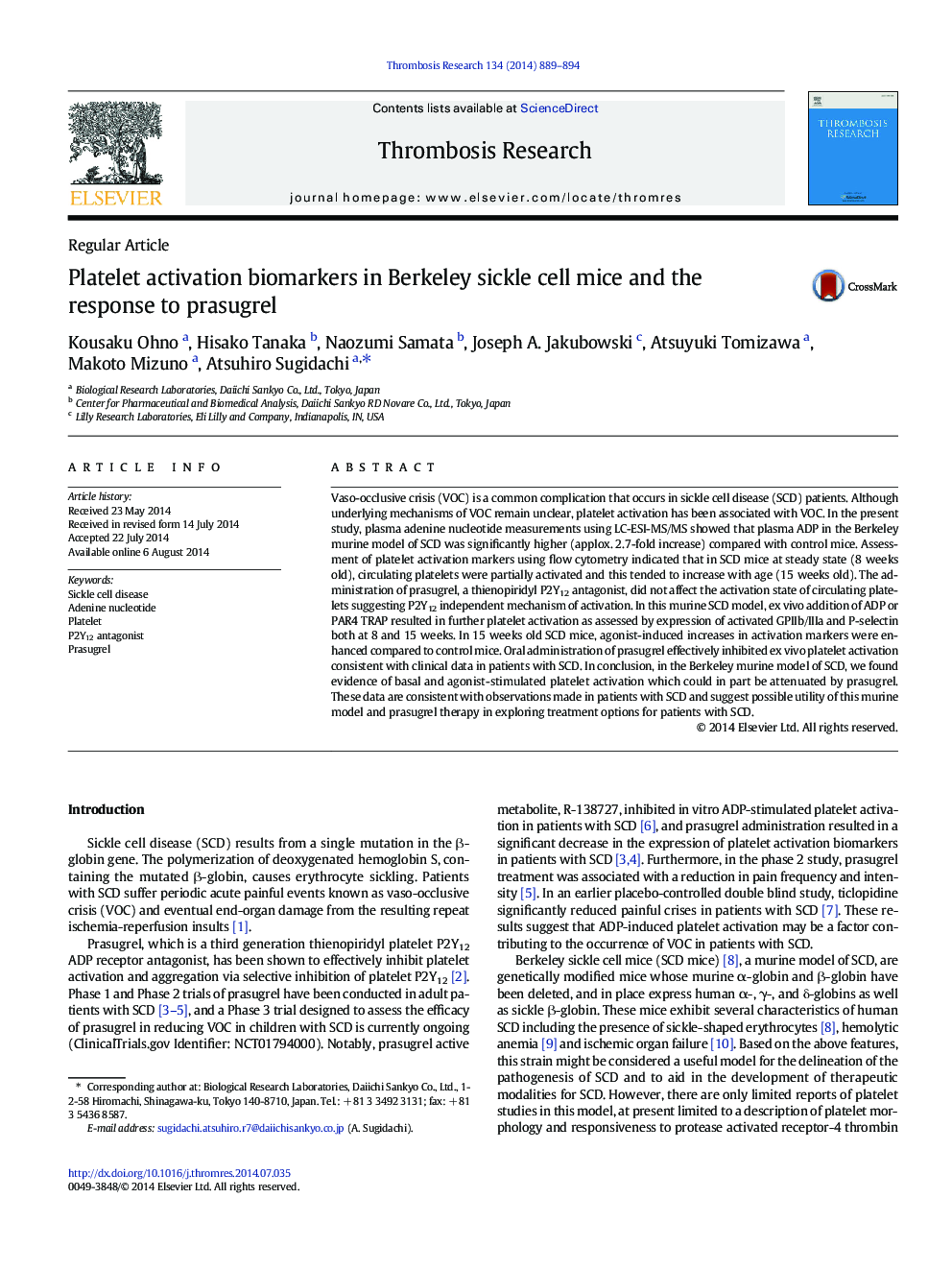| Article ID | Journal | Published Year | Pages | File Type |
|---|---|---|---|---|
| 6001105 | Thrombosis Research | 2014 | 6 Pages |
Abstract
Vaso-occlusive crisis (VOC) is a common complication that occurs in sickle cell disease (SCD) patients. Although underlying mechanisms of VOC remain unclear, platelet activation has been associated with VOC. In the present study, plasma adenine nucleotide measurements using LC-ESI-MS/MS showed that plasma ADP in the Berkeley murine model of SCD was significantly higher (applox. 2.7-fold increase) compared with control mice. Assessment of platelet activation markers using flow cytometry indicated that in SCD mice at steady state (8Â weeks old), circulating platelets were partially activated and this tended to increase with age (15Â weeks old). The administration of prasugrel, a thienopiridyl P2Y12 antagonist, did not affect the activation state of circulating platelets suggesting P2Y12 independent mechanism of activation. In this murine SCD model, ex vivo addition of ADP or PAR4 TRAP resulted in further platelet activation as assessed by expression of activated GPIIb/IIIa and P-selectin both at 8 and 15Â weeks. In 15Â weeks old SCD mice, agonist-induced increases in activation markers were enhanced compared to control mice. Oral administration of prasugrel effectively inhibited ex vivo platelet activation consistent with clinical data in patients with SCD. In conclusion, in the Berkeley murine model of SCD, we found evidence of basal and agonist-stimulated platelet activation which could in part be attenuated by prasugrel. These data are consistent with observations made in patients with SCD and suggest possible utility of this murine model and prasugrel therapy in exploring treatment options for patients with SCD.
Related Topics
Health Sciences
Medicine and Dentistry
Cardiology and Cardiovascular Medicine
Authors
Kousaku Ohno, Hisako Tanaka, Naozumi Samata, Joseph A. Jakubowski, Atsuyuki Tomizawa, Makoto Mizuno, Atsuhiro Sugidachi,
